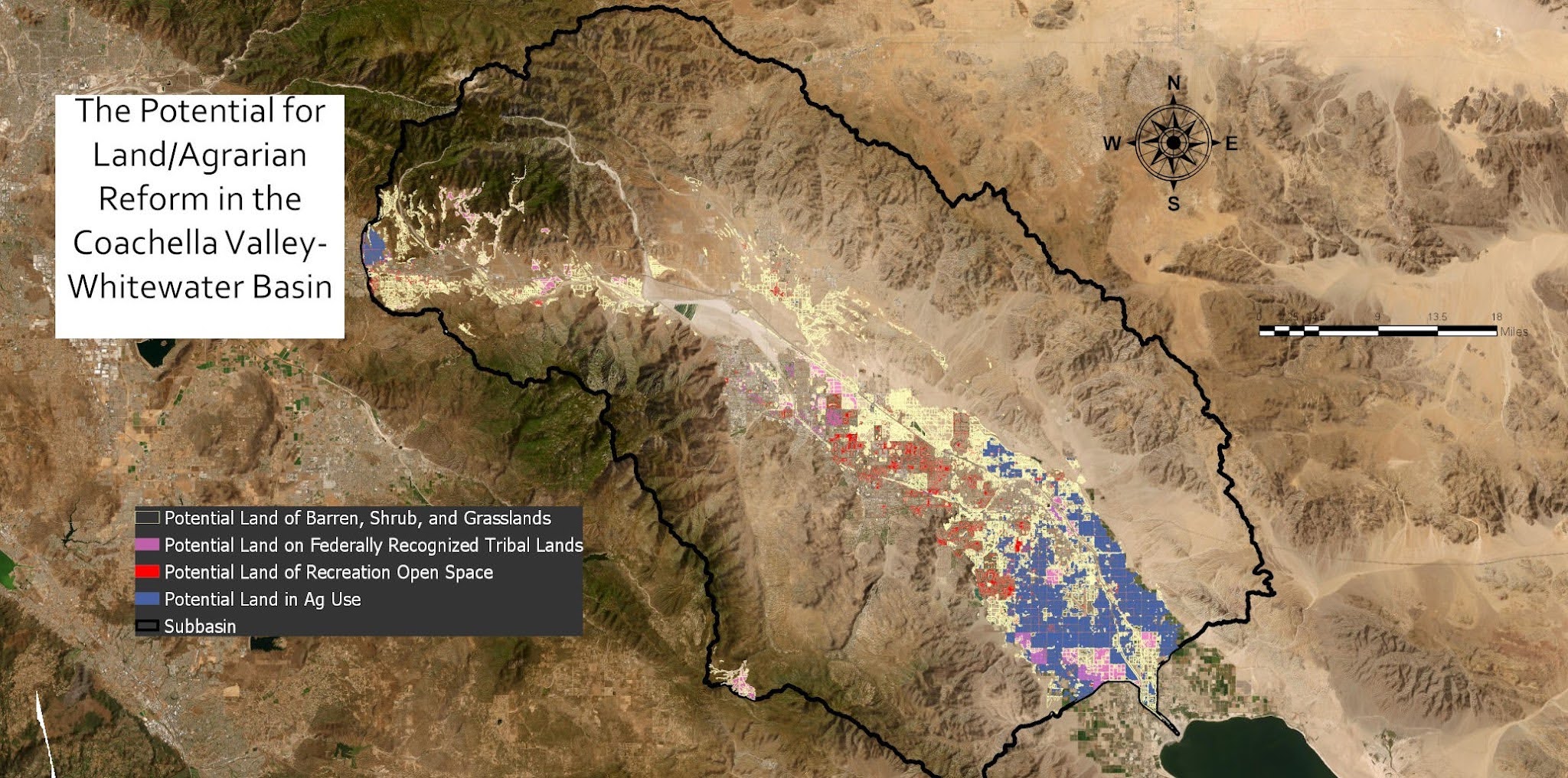Regional Mapping Analysis
Our regional mapping analysis focuses on understanding the complex relationships between land use, ownership, agricultural potential, and ecological systems across California. Through advanced geospatial techniques, we identify patterns that can inform more equitable and sustainable land reform strategies.
Policy Pathways
Our methodology relies on using SSURGO datasets, farmland classification classes, land use datasets, and parcel data to identify the outlined policy pathways:

Four policy pathway maps illustrating different approaches to land reform in the Coachella Valley.
- Prime Farmland on Undeveloped Lands: The state could adopt a land-use change policy which seeks to cultivating unused, productive land: a policy applied worldwide when expanding land access to landless populations — the Williamson Act already provides a legal and tax incentive basis to maintain/advance agriculture on these land; more robust state-constitutional reforms such as a social function of property clause could provide more robust legal foundations for communities to self-advocate and gain access to this land. Environmental concerns surrounding this land may involve the degradation of the environment given the intensification of agriculture in these areas which already suffer from water shortages. However, combining agroecology with these newly opened lands provides us opportunities to increase economic opportunities for landless peoples seeking land, as well as protecting our environment. .
- Prime Farmland on Federally-Recognized Tribal Lands: Many of reservation lands are also zoned as "conservation" and "recreation" (note the Morongo Reservation and Los Coyotes Reservation). Contemporary state tribal land buy-back funds and external foundations may provide the necessary capital to transform this land into enrolled tribal members, who have increasingly expressed criticisms of "landback" transactions being restricted to conservation land-use.
- Prime Farmland on Recreational/Open Space Lands: The red parcels of land would require change in land use codes by the state/county/city. This may be more difficult considering the fact that residents, especially those who wield significant political power, may want to maintain their golf courses and hiking trails. This, however, is not impossible and would just require extensive coalition building and innovations of agroecological, communitarian use. Utilizing urban agriculture tax incentives could provide financial stability for park transformations, along with Williamson Act incentives present for hiking trails — this is especially important for land located on federal tribal land. It should also be noted that ground leases can be creating with government owned land to faciliate access to the land for landless peoples interested in utilizing it for agricultural production.
- Prime Farmland in Agricultural Use: The blue parcels of land and would require negotiations with current private landowners to sell their land, especially as they approach retirement age. A state government which supported land access would help you all get access to the funds to acquire such land as well as provide proper incentives to negotiate with the private landowner.
Unproductive Lands & Social Function of Property
A key aspect of our mapping work involves identifying and analyzing "unproductive lands" - parcels that are currently underutilized or managed in ways that do not fulfill their social and ecological potential.
We draw on the concept of the "social function of property" - a legal doctrine recognized in many Latin American constitutions that establishes that property ownership carries social obligations. This principle has been fundamental to legitimate land reform programs throughout the Americas.
Our mapping identifies:
- Absentee-owned parcels that remain fallow despite agricultural potential
- Speculative land holdings that drive up prices without productive use
- Degraded lands that could benefit from agroecological restoration
- Corporate-owned lands operated through exploitative labor practices
By quantifying and visualizing these patterns, we provide empirical support for policy initiatives that prioritize the social function of agricultural land over absolute property rights.
